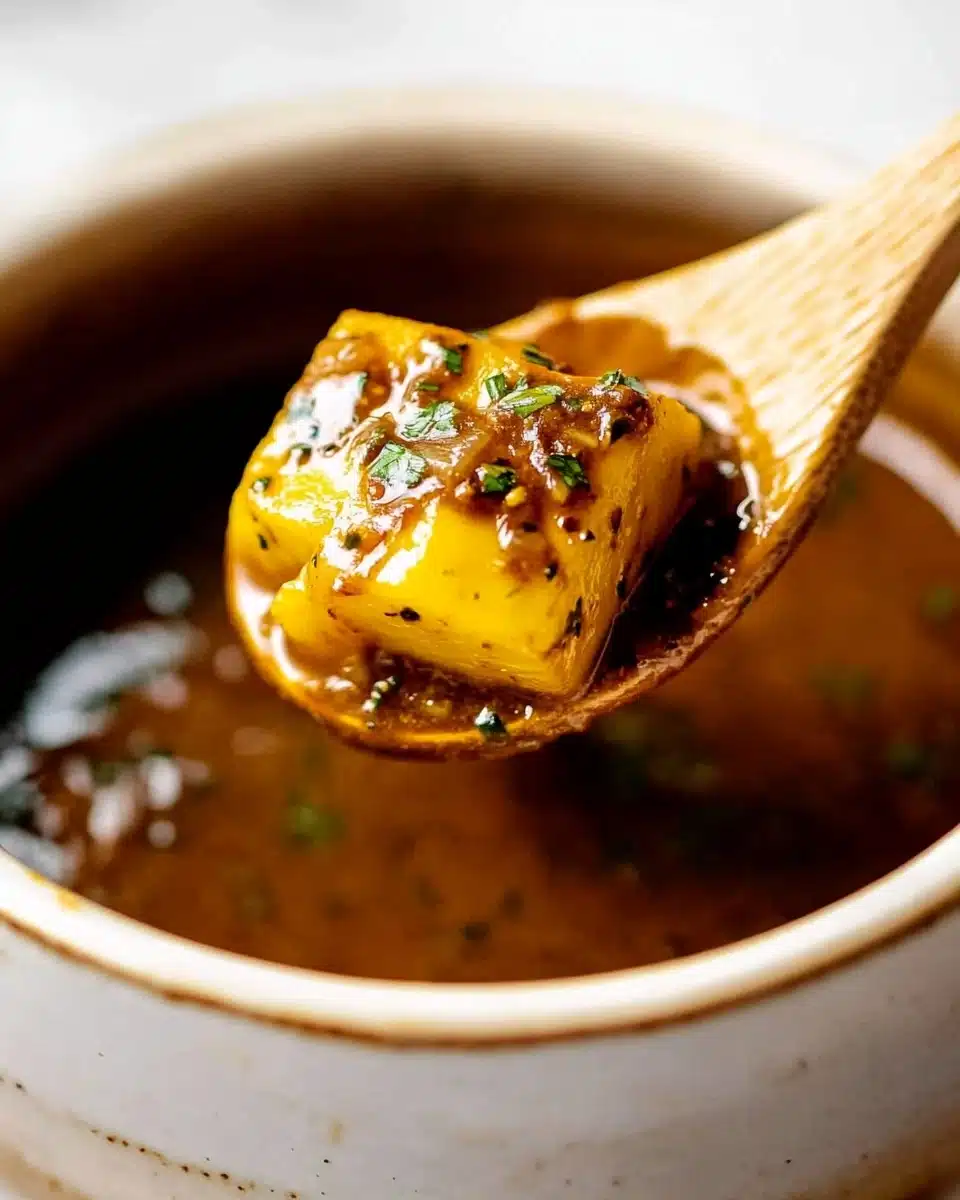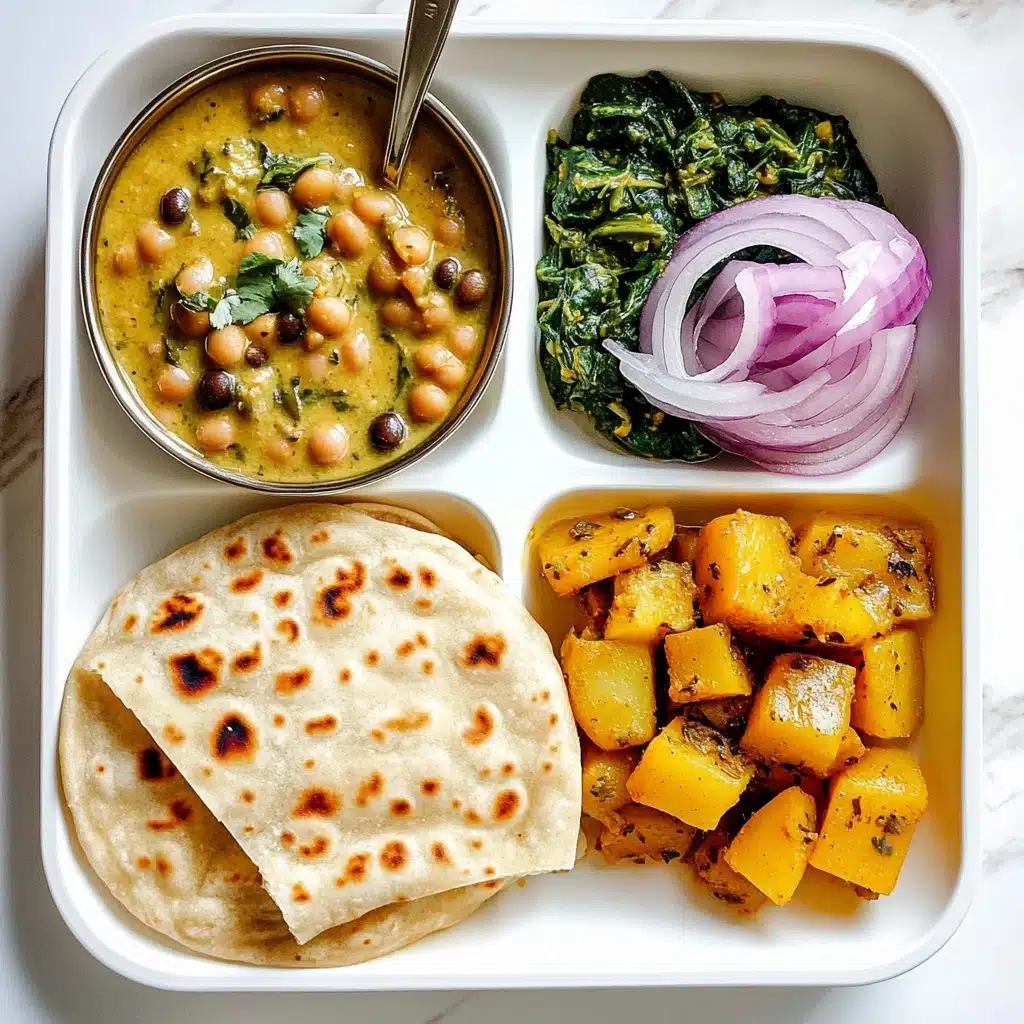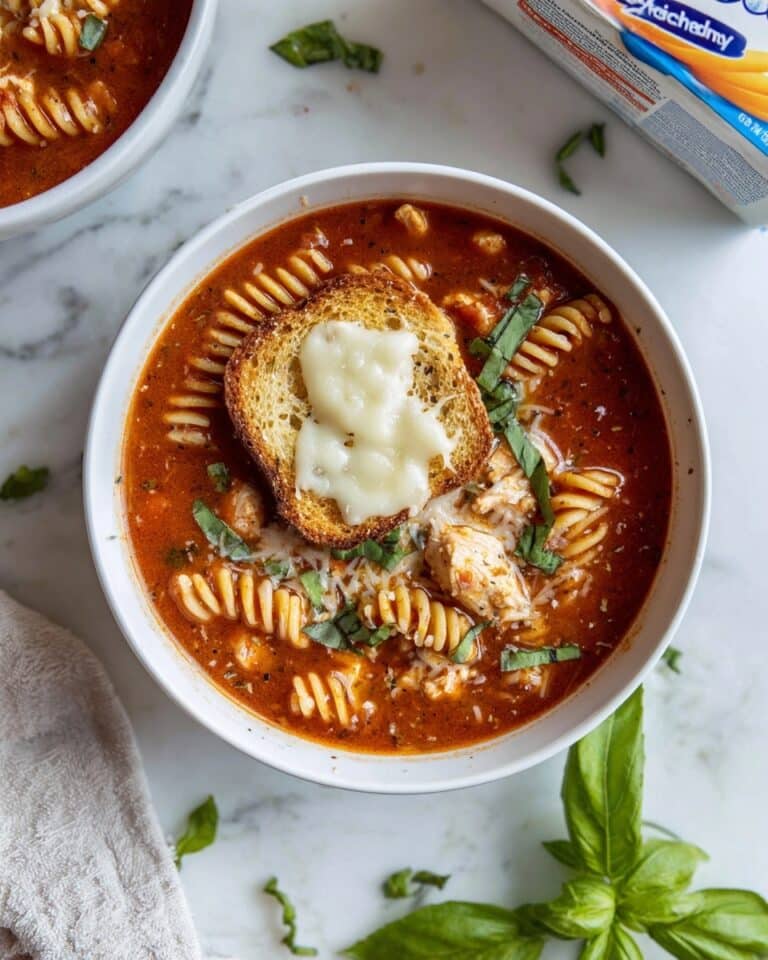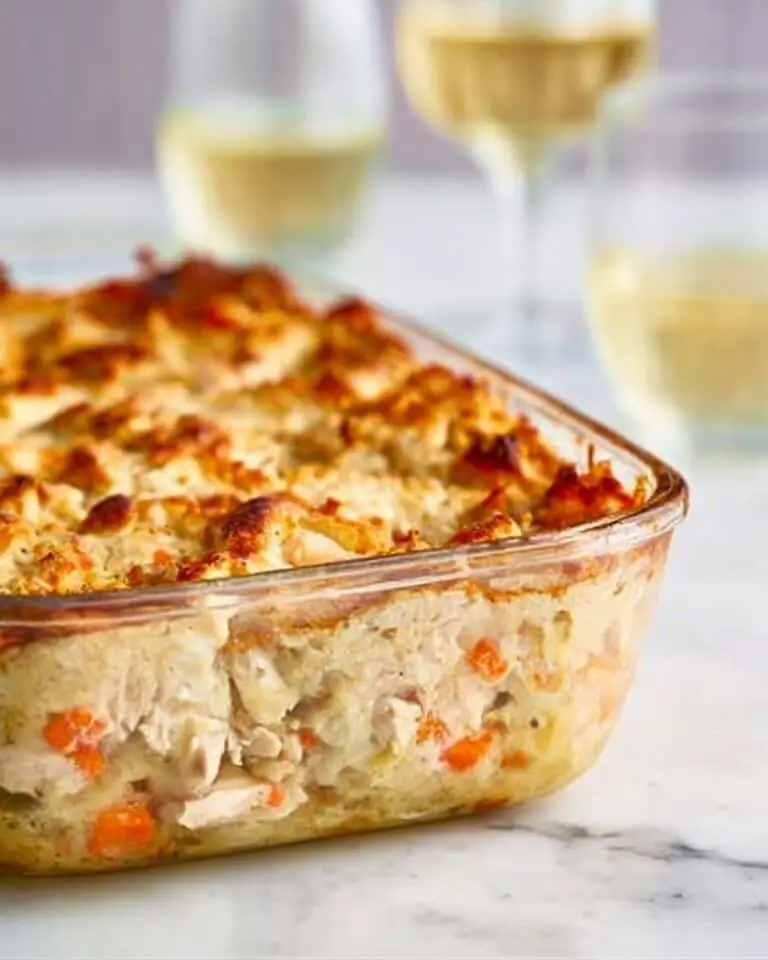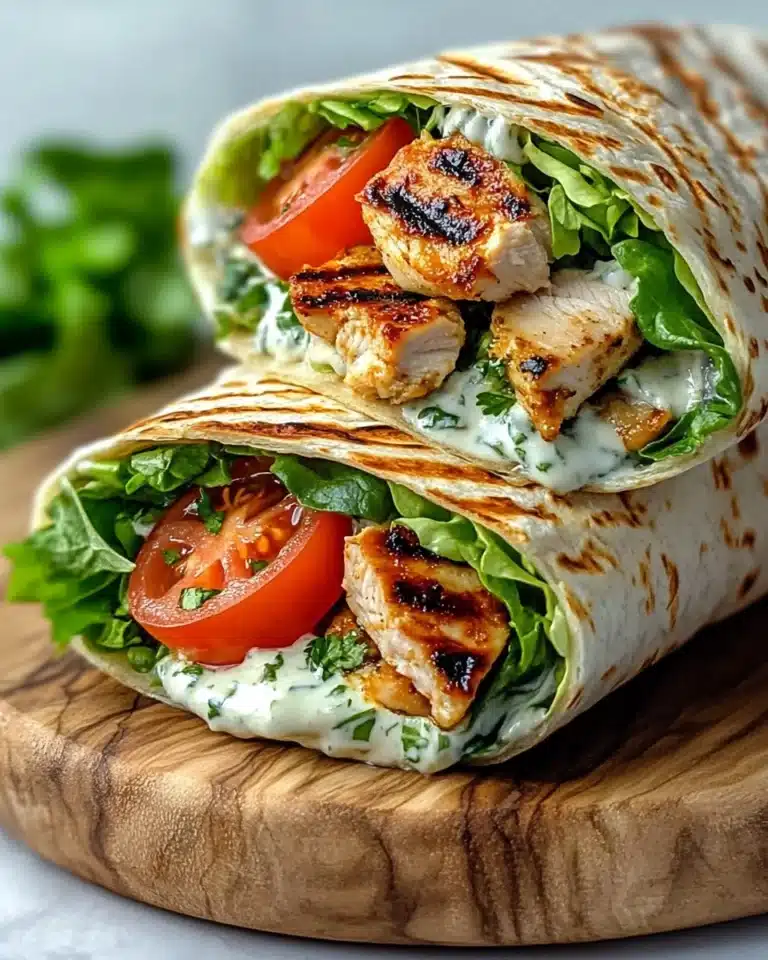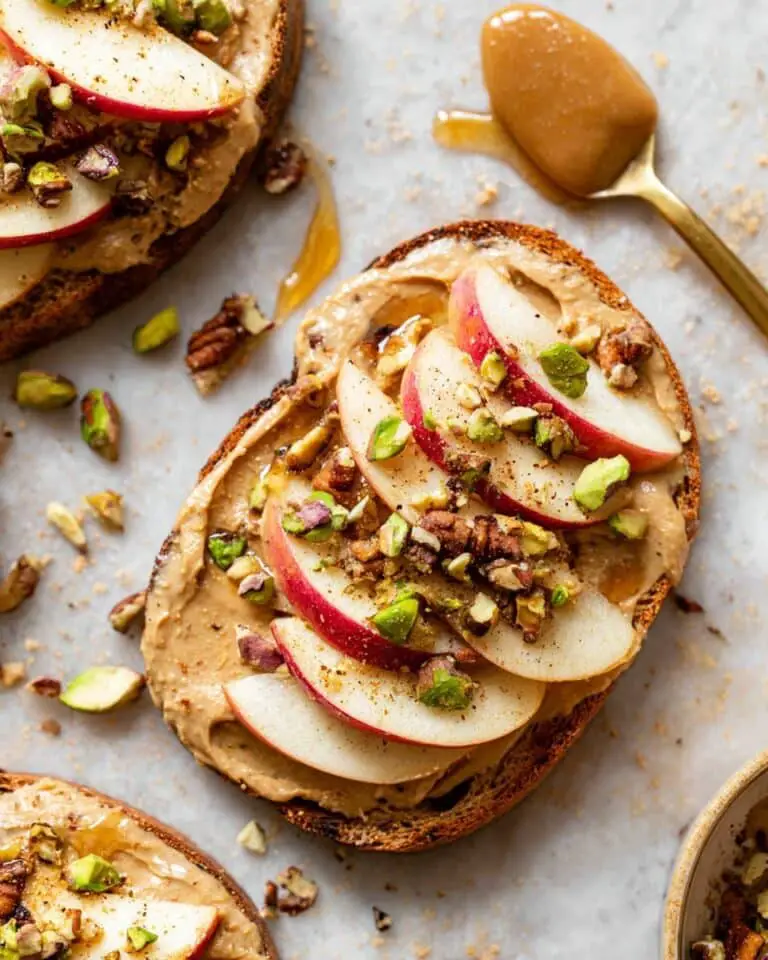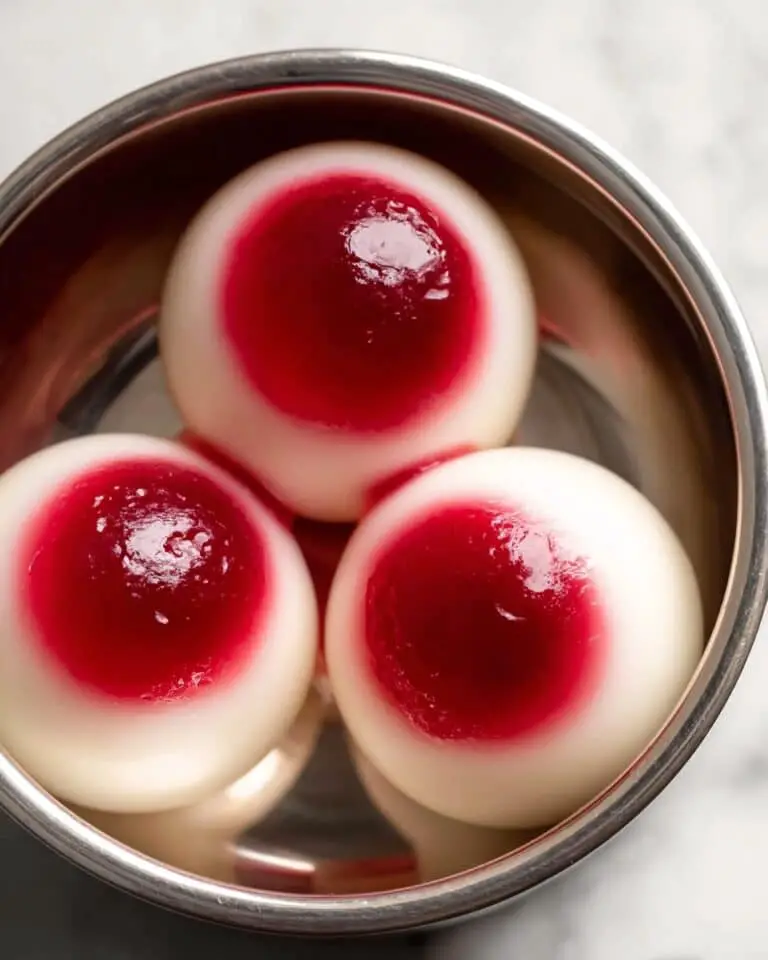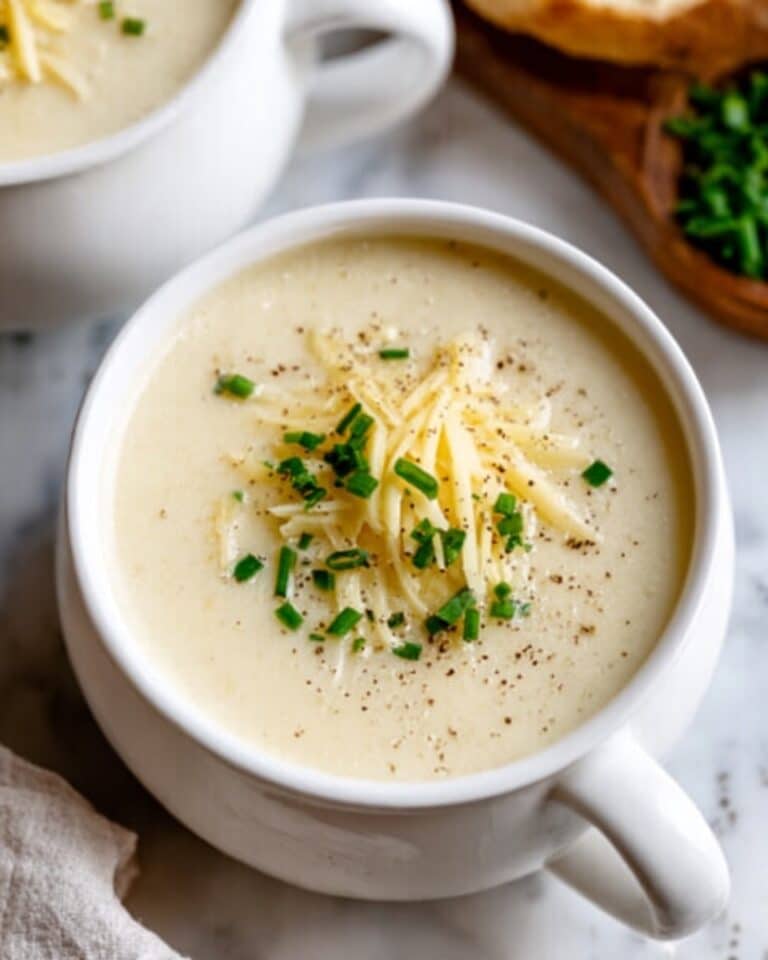If you want to experience the true heart of northern India on your plate, look no further than this Punjabi Mango Pickle Recipe—a gloriously tangy, spicy and aromatic creation that embodies summer sunshine in every bite! Made with chunks of green mangoes, bold spices, and mustard oil, this family-favorite classic will level up all your Indian meals and bring that irresistible, homespun flavor to your table.
Why You’ll Love This Recipe
- Big, Bold Punjabi Flavor: Every jar brims with the punchy taste of mustard oil, earthy spices, and raw mango tang—truly an explosion of North Indian nostalgia!
- Long-Lasting Goodness: This pickle easily keeps for over a year, holding up beautifully even at room temperature—so you’ll enjoy it through every season.
- Customizable Heat & Spice: Adjust the chilies, mustard, and oil levels to create your ideal hot, sour, or mellow pickle—make it as bold or gentle as your palate desires.
- The Ultimate Sidekick: From dal-chawal to parathas and even sandwiches, this Punjabi Mango Pickle Recipe is that secret ingredient that takes simple meals to a whole new level.
Ingredients You’ll Need
The magic of this Punjabi Mango Pickle Recipe lies in how basic kitchen staples transform into a true flavor powerhouse. Each ingredient brings a unique dimension—think tang from the mangoes, aroma from the seeds, deep color from the chili, and that signature warmth from mustard oil.
- Unripe Green Mangoes (1 kg/7–7.5 cups): Use the firmest, tartest green mangoes you can find for best crunch and tang.
- Mustard Seeds (¼ cup): Black, yellow, or split mustard seeds work; they provide earthy heat and that classic North Indian profile.
- Fenugreek Seeds (¼ cup): Whole or split, these boost the pickle with subtle bitterness and an earthy aroma.
- Fennel Seeds (¼ cup): These add a gentle, sweet undertone that balances the tart mangoes.
- Nigella Seeds/Kalonji (¼ cup): Known for their subtle onion notes, they add old-world pickle charm.
- Turmeric Powder (3 tbsp): Gives gorgeous golden color and gentle earthy flavor.
- Red Chili Powder/Cayenne (¼ cup): Adjust for your preferred heat—but don’t skip it for the vibrant color!
- Rock Salt (½ cup or to taste): Essential for preservation and drawing out mango moisture; regular or pink salt also works.
- Mustard Oil (3 cups or as needed): Cold-pressed or wood-pressed makes all the difference—this is the soul of the pickle!
Variations
Pickles are all about personal style, and this Punjabi Mango Pickle Recipe is incredibly adaptable! Feel free to change up ingredients or methods—mix and match for your perfect homemade achaar that suits your family, tastebuds, or dietary needs.
- Oil Swap: While mustard oil brings authentic Punjabi flair, you can use raw sesame oil or even sunflower oil for a gentler flavor. Remember, each choice will subtly transform the result!
- Extra Heat or Mildness: Dial up the red chili for a fiery batch, or play it safe with less to suit gentle palates and kids at home.
- Whole vs. Ground Spices: Some families prefer whole methi, mustard, and kalonji for a rustic bite, while others like a more uniform, ground masala—try both and see your favorite!
- Mixed Vegetable Pickle: Add small pieces of carrot or even tender raw papaya for a colorful, crunchy twist beyond mangoes.
How to Make Punjabi Mango Pickle Recipe
Step 1: Prep the Spices and Mangoes
If you have beautiful sunshine, spread all your spices and salt in bowls under the sun for 1–2 hours—this helps remove any moisture and extends the life of your pickle. Meanwhile, give your raw mangoes a thorough wash, then dry completely (sun-drying or vigorous toweling both work—just make sure there’s NO water left on the skin!).
Step 2: Grind the Mustard and Fenugreek
In a dry grinder, coarsely pulse the mustard seeds and fenugreek seeds—just enough to break them up and release that signature aroma. They should be a bit chunky, not powdered. This step is what sets apart the best Punjabi Mango Pickle Recipe from bland factory-made versions!
Step 3: Chop the Mangoes
Cut the dried mangoes into chunky, roughly 1.5-inch pieces—peel isn’t necessary (in fact, it provides crunch!), but do remove the stones. Get every bit of mango flesh you can off the stone, too—so nothing goes to waste.
Step 4: Mix the Masala & Mangoes Together
In a large, non-reactive mixing bowl, toss together chopped mangoes, the ground mustard-fenugreek mixture, fennel seeds, nigella seeds, turmeric, red chili powder, and salt. Stir with a wooden or steel spoon so everything is coated evenly. Taste a piece or two—the masala should taste slightly too salty, which is perfect for pickle preservation.
Step 5: Add Mustard Oil
Pour in about ½ cup mustard oil and mix well. This coats the mango pieces and the spice mix, beginning the infusion of flavor and keeping everything moist as it marinates.
Step 6: Jar and Sun-Dry
Spoon the mango pickle mixture into a clean, completely dry glass or ceramic jar. Cover with a lid and set your jar in a sunny spot for 3–4 days. Each evening, open and gently toss the contents so the masala and oil are evenly distributed. Once the sun sets, bring it inside to a cool, dry place, then return to sunlight the next morning.
Step 7: Final Oil Addition
After 3–4 days of sun-drying, pour the remaining mustard oil (about 2.5 cups) over the pickle, making sure the oil floats above the mangoes by at least 2–3 inches. The oil is what preserves the pickle long-term and keeps it safe from spoilage. Mix well one last time, seal the jar, and store in a cool, dry spot (out of direct sunlight now!) for another 4 days. Your Punjabi Mango Pickle Recipe will mellow and age to perfection, the bitterness fading and flavors deepening.
Pro Tips for Making Punjabi Mango Pickle Recipe
- Perfect Mango Selection: Seek out the freshest, greenest and firmest unripe mangoes—avoid any that feel soft or look yellowed for the crunchiest, most authentic pickle.
- Meticulously Dry Everything: Moisture is the enemy of pickles! Ensure mangoes, spices, jars, and utensils are bone dry before starting to prevent spoilage.
- Layer of Oil is Key: The final oil addition should leave a visible layer above the pickles—a must for preserving and avoiding fungus or mold as it ages.
- Be Patient While Maturing: Don’t rush into eating right away! Allow at least a week for the flavors to settle, for any initial bitterness to fade, and for all the spices to combine into pickle perfection.
How to Serve Punjabi Mango Pickle Recipe
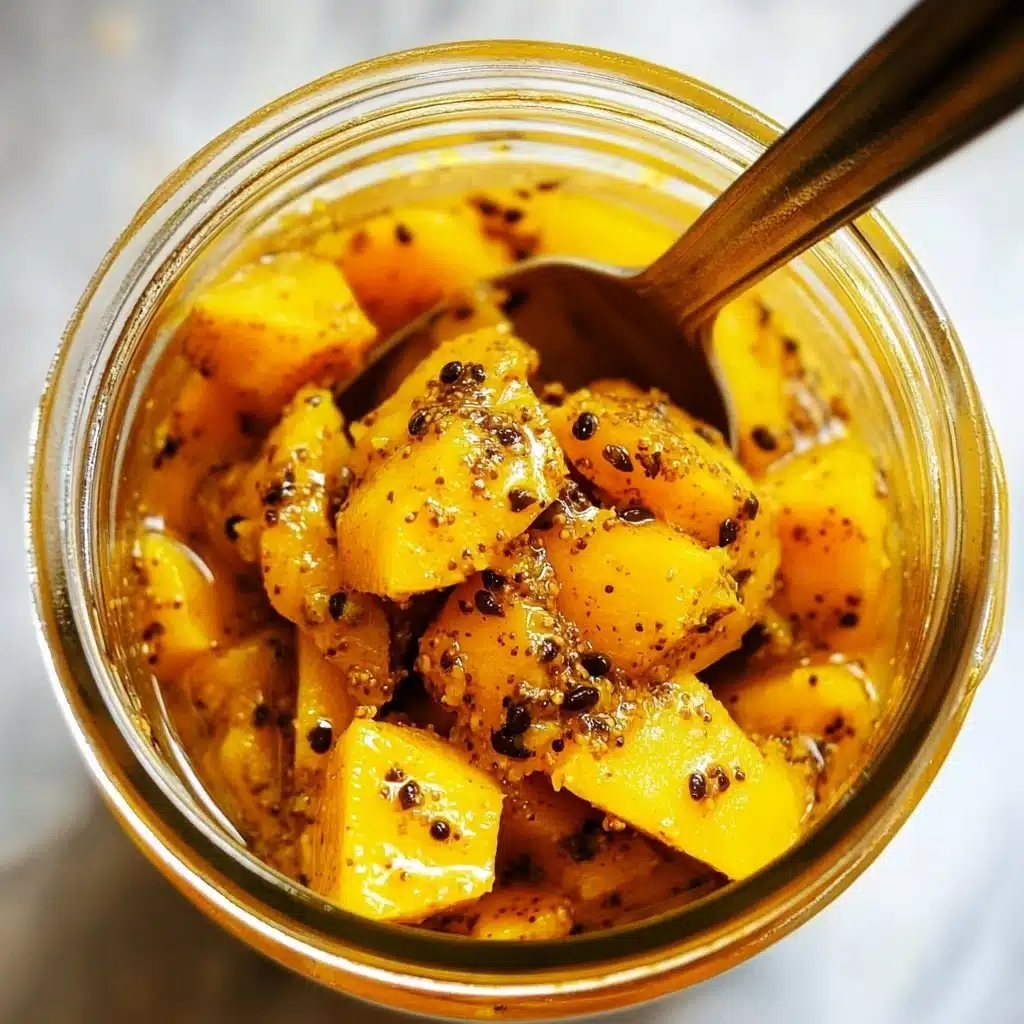
Garnishes
This pickle shines on its own and doesn’t need extra garnishing, but if you’re serving it for a special thali meal or get-together, a sprinkle of whole fennel seeds or a few fresh coriander leaves can add a pop of color beside the jar. A traditional brass or ceramic spoon for serving adds a beautiful touch, too!
Side Dishes
The magic of the Punjabi Mango Pickle Recipe is how it livens up everything: spoon it onto hot dal-chawal, tuck it next to thick parathas or theplas, swirl it into plain yogurt with rice, or let it brighten up khichdi and pulao. It also adds an extra punch to upma, poori, or as a quirky spread in wraps and sandwiches.
Creative Ways to Present
Try filling miniature glass jars with this pickle as party favors for friends, or serve individual spoons of it as a zesty amuse-bouche at your next Indian-inspired dinner. Layer the pickle with slices of cheese or roasted veggies for a fusion-style sandwich—with every bite, you’ll have that zesty, spicy pop!
Make Ahead and Storage
Storing Leftovers
Your jar of Punjabi Mango Pickle Recipe will happily last for a year or more at room temperature! Just store it in a dry, airtight glass or ceramic jar, and always keep a generous layer of oil over the top. Use a clean, dry spoon every time, and reseal tightly after serving to keep every morsel fresh and delicious.
Freezing
Traditional mango pickle is preserved through oil and salt, and doesn’t require or benefit from freezing. In fact, freezing the pickle can alter textures and flavors—simply follow good storage practices, and your pickle will stay perfect for many months.
Reheating
There’s no need to reheat this recipe—Punjabi Mango Pickle is enjoyed at room temperature, straight from the jar as a side or condiment. If your oil solidifies a bit in winter, just let the jar stand for 10–15 minutes at room temperature for it to loosen up.
FAQs
-
How spicy is this Punjabi Mango Pickle Recipe and can I adjust the heat?
This pickle is traditionally on the spicier side, with both mustard seeds and red chili powder giving it heat. You can easily reduce or increase either ingredient to find your perfect balance—just remember, less chili will let the other spices shine through as well!
-
Can I use a different oil instead of mustard oil?
Absolutely! While mustard oil brings that unmistakable flavor, you can use raw sesame oil or sunflower oil (lightly heat and cool it if using). Just keep in mind, the flavor will be milder and distinctively different from traditional Punjabi mango pickle.
-
Why is it important to keep the pickle covered with oil?
The oil acts as a natural preservative and barrier against moisture, air, and bacteria. As long as there’s always a layer of oil floating above, your mango pickle will stay mold-free and safely edible for many months.
-
My pickle tastes bitter at first—is this normal?
Yes, a slight bitterness is common initially due to the mustard oil and some spices. As the Punjabi Mango Pickle Recipe matures over several days, that bitterness fades, leaving you with a richly flavored, mellow pickle.
Final Thoughts
Whether you’re a seasoned pickle maker or trying it for the very first time, this Punjabi Mango Pickle Recipe is pure edible joy—a burst of tradition and sunshine that livens up any meal. Give it a try, share its bold flavors with your loved ones, and get ready to reach for that jar again and again!
Print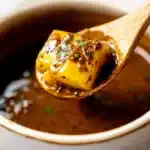
Punjabi Mango Pickle Recipe
- Prep Time: 15 minutes
- Cook Time: 0 minutes
- Total Time: 4 days 15 minutes
- Yield: 1 jar
- Category: Condiment
- Method: Pickling
- Cuisine: Punjabi
- Diet: Vegetarian
Description
Learn how to make delicious Punjabi-style mango pickle with mustard oil at home. This tangy, spicy, and flavorful pickle is a perfect accompaniment to any Indian meal.
Ingredients
Main Ingredients:
- 1 kilogram mangoes or 7 to 7.5 cups of chopped mangoes – unripe and green
Spices:
- 1/4 cup (40 grams) mustard seeds
- 1/4 cup (45 grams) fenugreek seeds
- 1/4 cup (30 grams) fennel seeds
- 1/4 cup (30 grams) nigella seeds (kalonji)
- 3 tablespoons (15 grams) turmeric powder
- 1/4 cup (25 grams) Red Chili Powder or cayenne pepper
- 1/2 cup (125 grams) rock salt
Others:
- 3 cups mustard oil
Instructions
-
Prepare Spices and Mangoes
Before you begin, take the spices and salt in small bowls and keep them in sunlight for 1 to 2 hours. Later, grind fenugreek and mustard seeds. Rinse and dry mangoes.
-
Making Pickle Masala Mixture
Chop mangoes, add spices, salt, and oil. Mix well. Transfer to a jar.
-
Making Mango Pickle
Keep in sunlight for 3-4 days, then add remaining oil. Seal and keep in a cool dry place for 4 days.
Notes
- Ensure spices are fresh.
- Use good quality mustard oil.
- Can substitute mustard oil with sesame or sunflower oil.
Nutrition
- Serving Size: 1 serving (entire jar)
- Calories: 1906
- Sugar: 144g
- Sodium: 57640mg
- Fat: 102g
- Saturated Fat: 12g
- Carbohydrates: 251g
- Fiber: 70g
- Protein: 46g

